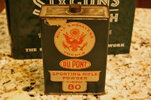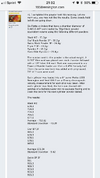Jim Watson
Member
You see a lot of old velocity readings at 78 feet. The electro-mechanical chronographs needed a lot of dwell time to get precise readings. So the start screen was at one yard, the stop screen at 51 yards, 150 feet apart, so the velocity was listed as for the midpoint.
The ballistic pendulum needed no electrical power.
The ballistic pendulum needed no electrical power.



